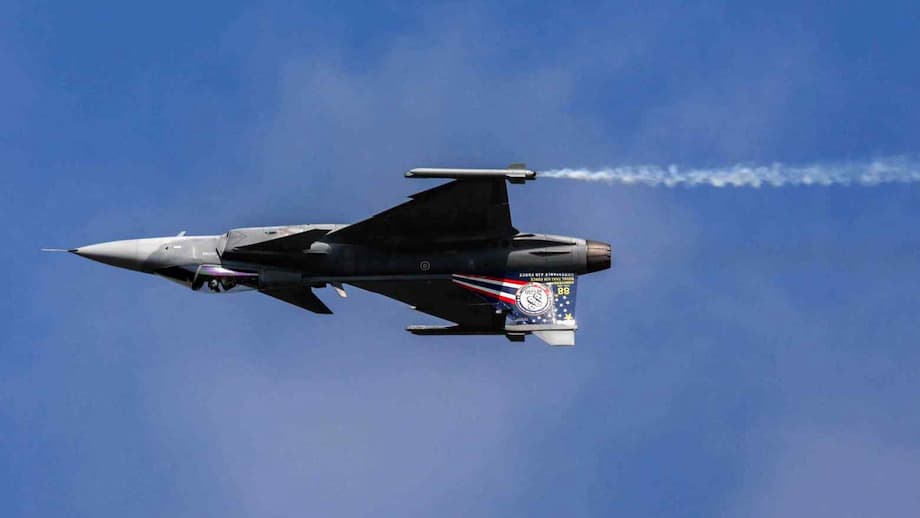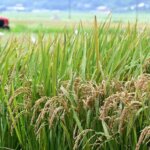Thailand and Cambodia: A Border Conflict Erupts
Thailand has dramatically increased its military readiness and procurement, including the acquisition of new fighter jets, following a deadly escalation of border clashes with neighboring Cambodia. The recent violence, which erupted in July 2025, marks the most serious confrontation between the two Southeast Asian nations in over a decade and has drawn international concern over the risk of wider conflict in the region.
- Thailand and Cambodia: A Border Conflict Erupts
- How Did the Conflict Begin?
- Military Response: Thailand’s Show of Force
- The Human Cost: Civilians Caught in the Crossfire
- Historical and Political Context: Why Is the Border So Contentious?
- International and Regional Reactions
- Ceasefire and Ongoing Tensions
- Broader Implications: What’s at Stake?
- In Summary
The fighting, centered around disputed ancient temples and undemarcated border areas, has resulted in dozens of deaths, mass displacement of civilians, and a flurry of diplomatic activity. Both sides have traded accusations over who initiated the violence, while nationalist sentiment and political turmoil in both countries have fueled the crisis.
How Did the Conflict Begin?
The roots of the Thailand-Cambodia border dispute stretch back more than a century, to colonial-era treaties and ambiguous maps drawn by the French when Cambodia was a colony. The most contentious sites are ancient Hindu temples, particularly the Preah Vihear and Ta Moan Thom temples, which both countries claim as part of their historical heritage and national territory.
While the International Court of Justice (ICJ) awarded the Preah Vihear temple to Cambodia in 1962, the surrounding land remains disputed. Tensions have periodically flared, most notably in 2008 and 2011, when military skirmishes left dozens dead. The latest escalation began in May 2025, after a Cambodian soldier was killed in a brief exchange of gunfire. The situation deteriorated further following landmine incidents that injured Thai soldiers, with each side accusing the other of provocation and territorial encroachment.
Timeline of the July 2025 Escalation
On July 24, 2025, the conflict exploded into open warfare:
- Early morning: Both sides accused each other of violating arrangements near the Ta Muan Thom Temple, deploying drones and barbed wire.
- 8:20 a.m.: Gunfire erupted, quickly escalating to artillery and rocket attacks.
- 10:40 a.m.: Thai F-16 fighter jets bombed targets inside Cambodia, marking a significant escalation and the first use of air power in the conflict.
- Throughout the day: Clashes spread to at least six locations along the border, with both armies using heavy weapons, including BM-21 rocket launchers and mortars.
- By midday: Thailand closed all border checkpoints, and both governments issued statements blaming each other for the violence.
According to Thai authorities, Cambodian rocket attacks killed at least 13 civilians and wounded dozens more, including children. Cambodia reported its own casualties and accused Thailand of reckless military aggression.
Military Response: Thailand’s Show of Force
In response to the border clashes, Thailand rapidly mobilized its military assets. Six F-16 fighter jets were deployed from Ubon Ratchathani province, with at least one jet conducting bombing runs on Cambodian military positions. The Thai military justified the use of air power as a precision response to rocket attacks on Thai villages, while Cambodia condemned the strikes as disproportionate and dangerous.
Thailand’s acting Prime Minister, Phumtham Wechayachai, emphasized the government’s commitment to national security, stating:
“The military and government are fully committed and equipped to ensure national security and civilian safety.”
The deployment of advanced fighter jets highlighted Thailand’s military advantage over Cambodia, whose forces relied more on artillery and truck-mounted rocket launchers. The Thai government also announced plans to purchase additional fighter jets and modernize its armed forces, citing the need to deter further aggression and protect its borders.
Meanwhile, Cambodia’s Prime Minister Hun Manet appealed to the United Nations Security Council, calling for an urgent meeting and accusing Thailand of unprovoked aggression. The international community, including China, the United States, and ASEAN members, urged both sides to exercise restraint and seek a peaceful resolution.
The Human Cost: Civilians Caught in the Crossfire
The border clashes have had a devastating impact on civilians in both countries. Artillery and rocket attacks struck villages, hospitals, and residential areas, forcing mass evacuations. Thai authorities reported at least 13 civilian deaths and over 40,000 people displaced from border provinces. Cambodia also evacuated thousands from its side of the frontier.
Relief agencies estimate that more than 300,000 people in both countries have been displaced since the violence began. Many sought shelter in fortified bomb shelters or temporary camps, while humanitarian organizations scrambled to provide food, medical care, and psychological support.
The fighting also led to the capture of at least 20 Cambodian soldiers by Thai forces. While two wounded soldiers were returned, Cambodia demanded the release of the remaining prisoners under international humanitarian law. Both sides have accused each other of mistreating detainees and violating the laws of war.
Historical and Political Context: Why Is the Border So Contentious?
The Thailand-Cambodia border dispute is deeply rooted in history, nationalism, and politics. The 817-kilometer land border was first mapped by France in 1907, but the demarcation has been contested ever since. The Preah Vihear and Ta Moan Thom temples, both dating back to the 11th century, are symbols of national pride and have become rallying points for nationalist sentiment in both countries.
In 2008, Cambodia’s successful bid to list Preah Vihear as a UNESCO World Heritage Site reignited tensions, leading to deadly clashes and the involvement of the ICJ. Despite international rulings, both sides have maintained military outposts near the disputed sites, and periodic incidents have kept the border volatile.
Domestic politics have also played a significant role. In Thailand, the crisis coincided with the suspension of Prime Minister Paetongtarn Shinawatra and a fragile coalition government, leaving the military with greater authority over border matters. In Cambodia, Prime Minister Hun Manet, son of long-time leader Hun Sen, faced pressure to assert his leadership and defend national sovereignty. A leaked phone call between Thai and Cambodian leaders further inflamed public opinion and led to political fallout in Bangkok.
Nationalism and Propaganda
Both governments have used nationalist rhetoric and propaganda to rally domestic support. Accusations of betrayal, insults to the monarchy, and allegations of foreign interference have circulated widely in the media. Each side blames the other for starting the fighting and targeting civilians, while social media has amplified rumors and misinformation.
International and Regional Reactions
The border conflict has alarmed neighboring countries and the broader international community. Malaysia, as the chair of ASEAN, played a key role in brokering a ceasefire, while China, Japan, the European Union, and the United States all called for restraint and dialogue. The United Nations Security Council convened an emergency meeting to address the crisis, reflecting concerns over regional stability and the risk of escalation.
ASEAN’s response is being closely watched as a test of the organization’s ability to manage regional disputes. While Thailand has rejected third-party mediation, it remains open to bilateral talks or mediation by Malaysia. Cambodia, meanwhile, has sought international intervention and referred unresolved border issues to the ICJ.
Ceasefire and Ongoing Tensions
After five days of intense fighting, Cambodia and Thailand agreed to an immediate and unconditional ceasefire, effective at midnight on July 28, 2025. The agreement, reached through talks facilitated by Malaysia and supported by the United States, included commitments to halt all attacks, avoid unprovoked firing, and consult through bilateral mechanisms in the event of future incidents.
Both sides also pledged to comply with international humanitarian law in the treatment of prisoners and to schedule further meetings of the General Border Committee (GBC) to monitor the ceasefire. Observers from Malaysia, the US, and China are expected to participate in future talks.
Despite the ceasefire, tensions remain high. Thailand has accused Cambodia of further provocations, including cyberattacks and violations of no-fly zones by drones. Cambodia has demanded the release of its captured soldiers and accused Thailand of mistreatment. Propaganda battles continue, and both militaries remain on alert along the border.
Broader Implications: What’s at Stake?
The Thailand-Cambodia border conflict is about more than territory. It reflects deep-seated historical grievances, domestic political struggles, and the challenges of managing nationalism in a rapidly changing region. The dispute has exposed weaknesses in regional security mechanisms and highlighted the risks of unresolved border issues in Southeast Asia.
For Thailand, the crisis has underscored the importance of military modernization and border security. The purchase of new fighter jets and other military equipment is seen as both a deterrent and a response to perceived threats. For Cambodia, the conflict has provided an opportunity for its leaders to demonstrate resolve and rally public support, but at the cost of lives and economic disruption.
The humanitarian impact has been severe, with hundreds of thousands displaced and communities traumatized by violence. The risk of renewed fighting remains, especially if political or nationalist pressures override diplomatic efforts.
In Summary
- Thailand and Cambodia’s border conflict erupted in July 2025, resulting in dozens of deaths and mass displacement.
- The fighting centered on disputed ancient temples and undemarcated border areas, with both sides blaming each other for starting the violence.
- Thailand responded with airstrikes and increased military purchases, highlighting its military advantage over Cambodia.
- International actors, including ASEAN, the UN, and major powers, have called for restraint and facilitated a ceasefire.
- Despite the ceasefire, tensions remain high, with ongoing accusations, propaganda, and military readiness on both sides.
- The conflict reflects deep historical, political, and nationalist divisions, with significant humanitarian consequences.
- Efforts are underway to monitor the ceasefire and address humanitarian issues, but the risk of renewed violence persists.












